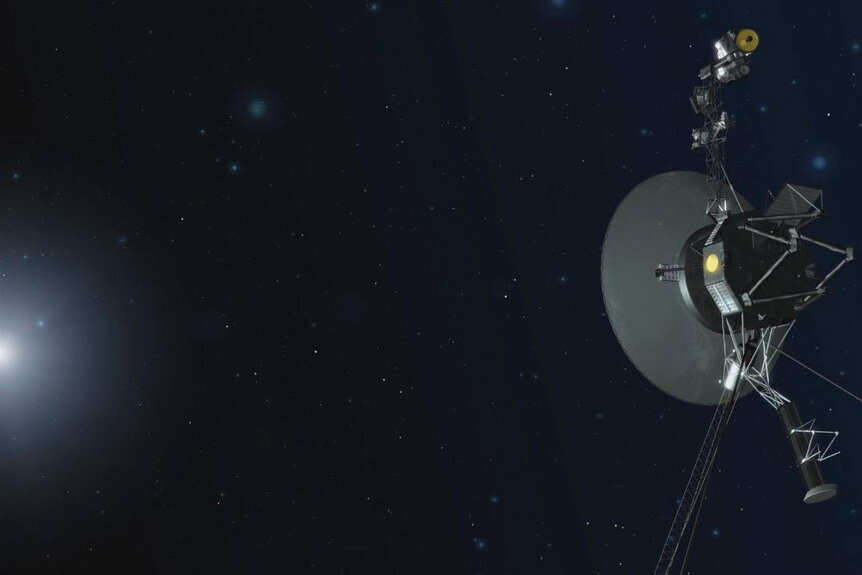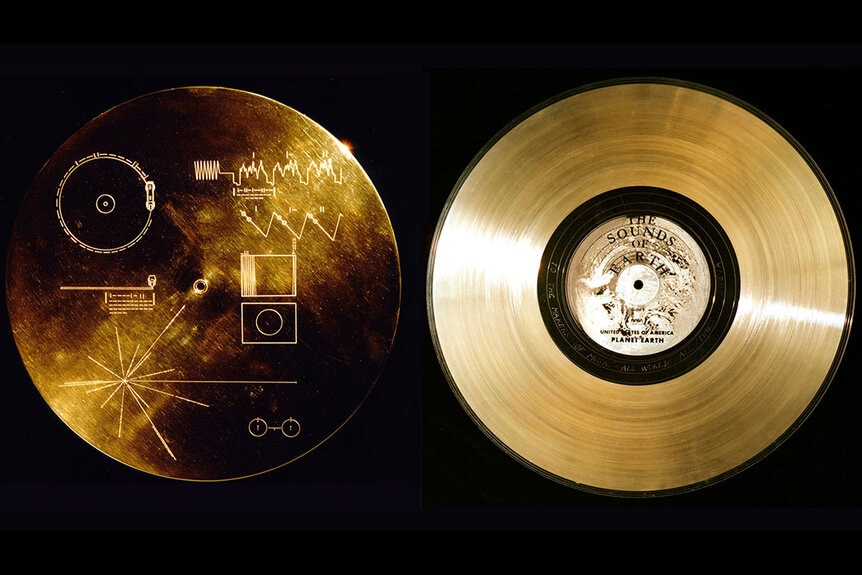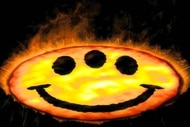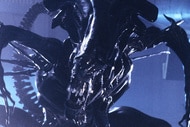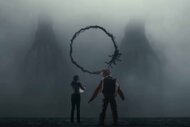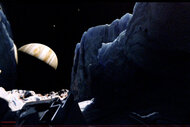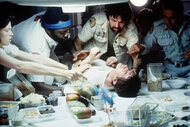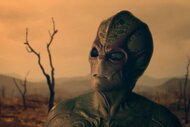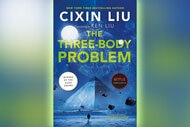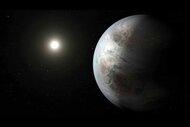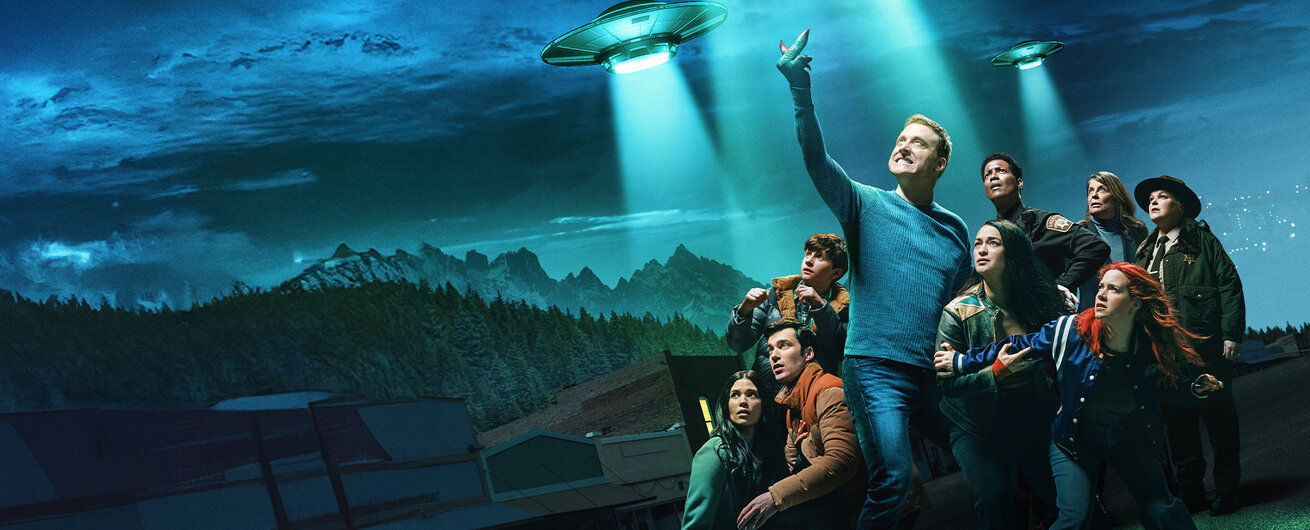Create a free profile to get unlimited access to exclusive videos, sweepstakes, and more!
Scientists Are Dreaming Up a Sequel to Voyager's Gold Record, an Alien Message in a Bottle
We have to rehearse what we want to say before we try to contact aliens again.
Humanity wants so desperately to be besties with aliens. If they’re out there (and it seems impossible that they’re not) then we just want to be invited to the intergalactic party, already. SYFY’s own Resident Alien (streaming on Peacock) presents one possible first contact scenario, but we’ve dreamed up plenty of others. And some of them we’ve even tried to make happen.
We have designed and constructed telescopes of every size and type, and astronomers use them to peer into the cosmos, understand our universe, and hopefully pick up an alien transmission or two. So far, the skies have been pretty quiet so we decided to send our own messages in the hope that an extraterrestrial intelligence might pick them up. Now, scientists are designing the next phase of cosmic shouts into the dark.
Voyager’s Golden Record, a Cosmic Message in a Bottle
NASA launched two spacecraft, both called Voyager, a few months apart in 1977. Their primary mission was to explore Jupiter and Saturn, a mission they completed beautifully. Afterward, they transitioned to an extended mission which included making a hard left turn for deep space. They’ve spent the last 45 years racing through space at tens of thousands of miles per hour and, as of November 2018, both spacecraft have passed out of the solar system and into interstellar space.
RELATED: Searching for Extraterrestrial Intelligence: The Science Behind Contact
In addition to their scientific missions, both Voyager crafts carry a 12-inch “golden record” (it’s actually made of copper and plated with gold) which holds information about our species and our planet. The contents of the gold record were selected by a committee chaired by the late Carl Sagan and endeavored to provide as complete and understandable a picture of humanity as possible.
The record included audio recordings of various spoken languages and musical selections. It also included 115 images of things like our solar system, cell division, the structure of DNA, diagrams of the human form, and various images of people and nature. It also included a needle and symbolic instructions for how to play the record. The gold record is intended as a greeting, a way of saying to any aliens who happen to encounter it, “Hello, we are here, and this is who we are.”
We cast those two probes into space like a message in a bottle, hoping that one day it might be found by someone who can appreciate it. It might even get picked up by an intelligence that could respond, but probably not. The odds that either of the Voyager crafts are ever seen again, by anyone, are vanishingly small. If there is life out there in the cosmos and if we want to get in touch with them, we’re probably going to have to throw a lot more bottles into the cosmic ocean.
Making a Sequel to Voyager’s Gold Record
To that end, scientists are thinking up what the next version of the Voyager gold record might look like, and they’ve published their thought process in the journal Earth and Space Science. Because we won’t have any shared language with any potential recipients of our messages, we have to figure out ways to communicate information about ourselves in ways which might be more universally understood.
RELATED: NASA’s Racing Against the Clock to Keep Voyager Alive in Interstellar Space
We’re also likely communicating with someone not just across space, but also across time. If any of our messages are ever received, it will likely be in the distant future. Therefore, these messages should be conscious about the way we present ourselves and also be an accurate representation of our history and our current moment.
The effort aims to build on the legacy of the golden record while also attempting to improve upon it. Like the golden record, scientists propose that future messages should include images, recorded sounds, and photos of humanity and nature. In addition, they propose that messages include mathematical messages, drawings, videos, and dictionaries. Moreover, messages should communicate not just where it came from but when it came from, and it should capture the breadth of humanity without being focused on any one culture or subset of cultures.
Scientists also note that messages should provide as much context as possible, so that any ETs who find it will have a fighting chance to solve the puzzle. As such, future messages will probably have a focus on video content which can best approximate our lived experience. With any luck, one of our bottles will wash up on some distant cosmic island and we’ll make contact, however fleeting, with some new friends.
In the meantime, hang out with our alien buddy in Resident Alien, streaming on Peacock.




